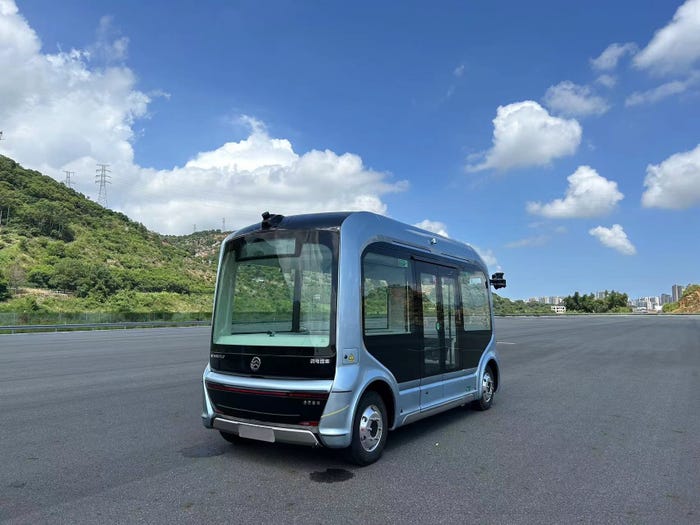Bridging the IoT Reality Gap: Digital Solutions for Analog ProblemsBridging the IoT Reality Gap: Digital Solutions for Analog Problems
In order to bridge this gap, it's paramount to understand how the technology can address specific problems in vertical industries.
May 16, 2017

There’s still a lot of mystery and confusion surrounding the internet of things.
Specifically in the industrial IoT, depending on the vertical, there are many questions as to why should (let’s say) a manufacturer implement an IoT solution, where should they start and how do they go about it?
In this day and age IoT has become a driving force in digital transformation for multiple industries. There’s almost no industry left that is not affected by IoT. Some industries like utilities, transportation fleets, automotive and retail are much further ahead with deployment of IoT solutions. Others like some manufacturers, cities, agriculture and global shipping are just starting to embrace IoT.
Each of these industries has different underlying problems, different use cases, different process flows and different existing technology stacks. It’s becoming increasingly harder to service these markets with horizontal technology solutions.
Many technology companies and service providers had to learn it the hard way, realizing that their initial IoT platforms or solutions need to be modified or completely revamped to better fit specific industry requirements. Many IT and operational executives realized that what might have worked well in one industry (something the might have learned at an IoT conference) most likely will not work in theirs without modifications.
This is an area where we’re facing a gap between technology and reality. Most operational executives in the industry have a specific set of challenges they want to address – the “analog problems” – such as yield and throughput management in manufacturing; maintenance-cost optimization at a client site; transit and parking management in cities; driver performance and compliance in transportation fleets – just to name a few.
At the same time IT and operations executives are bombarded by technology vendors trying to sell them on “digital solutions”: a new platform, a new data analytics tool, a new sensor hub and so on. Very often, the initial reaction of the industry IT and operations executives is: “we are already sitting on piles of data we don’t really know what to do with, as only 3% of this data is used to make decisions – and the solutions you are offering us are going to multiple these piles of data by 1000 times? Thank you very much!”
It’s this gap between “analog problems” and “digital solutions” that is holding back rapid IoT deployments and realization of ROI in multiple industries.
In order to bridge this gap, it’s paramount to understand how the technology can address specific problems in the industries. Some of the early IoT use cases focused on saving time and costs in very specific processes – for example meter reading in utilities, route optimization in fleets or tracking parts in manufacturing.
However these use cases are just scratching the surface of what IoT is capable of. To get to the next level it’s critical to look into the really big problems like declining revenue per square foot in physical retail, capacity utilization in fleets, throughput optimization in manufacturing. It’s critical to look at problems like competitiveness and determine how IoT can help addressing it by creating new service and revenue models.
To get there, first and foremost, we need to understand the big problems we are trying to solve. The size and the urgency of a problem is often determined by the amount of capital it affects. For example, optimizing checkout process in brick-and-mortar retail can contribute between 10-15% to the bottom line of a retailer.
Another indicator of the acuteness and urgency of an industry problem is the amount of startups attacking it. Here automated or simplified check-out is another great example. After the big problems are identified and understood we need to break them down into specific technology use cases – such as remote monitoring or maintenance. Once the specific use cases are defined, it’s critical to map the technology stack against the use case – the whole stack including hardware (processing power, duty cycle, location accuracy, memory requirements etc.), connectivity (bandwidth, latency, coverage etc.) and data (variety, velocity and volume). Only then it becomes obvious what is missing technologically to support the use case and ultimately to address the big industry problem.
For the purpose of this post I will use a simple example: remote monitoring in mining and remote monitoring in a factory are two completely different use cases, even though they may seem similar – the requirements for energy consumption, processing power, bandwidth and latency in a technology solution are going to be completely different, depending on each industry vertical. The back-office software that our solution would need to be integrated with in each instance may be different too.
Here’s another example in retail: many retail malls in the US are facing the problem of declining foot traffic, declining revenue per square foot. The problem can be broken down into three parts: difficulty getting to the mall because of traffic and parking problems (especially in city malls); difficulty finding items customers are looking for (especially compared to online sales) and difficulty checking out because of long lines (again, compared to online sales). Each of these sub-problems can be addressed by IoT and in aggregate IoT can address the whole problem. For example, solving parking problems by offering better routing guidance to available parking, more flexible payment options and dynamic pricing can result in increasing foot traffic into the stores.
In solving this problem, physical retailers can find a willing ally in the form of cities. Physical retail tax is one of the major sources of revenue for cities. As a result of pressure physical retailers have been under, cities’ finances are suffering as well. Anything that can optimize the flow of customers into retail spaces is a welcome opportunity by cities.
This is an example of addressing the gap between “analog problems” and “digital solutions” not only for one, but for two verticals – retail and smart cities.
Understanding the big “analog” problems in your industry and specifically in your business is the critical first step for embracing IoT solutions. Only then it is possible to start looking into use cases that can address these problems with technology. Tying the outcomes of a technology solution implementation to specific indicators – such as reduction of inventory in manufacturing, improved vehicle flow in cities or increasing revenue per square foot in retail – finally closes the gap between technology and reality.
These types of IoT projects are the ultimate opportunity to secure long and lasting value in your business.
— Daniel Obodovski, Founder & CEO, The Silent Intelligence
About the Author
You May Also Like








